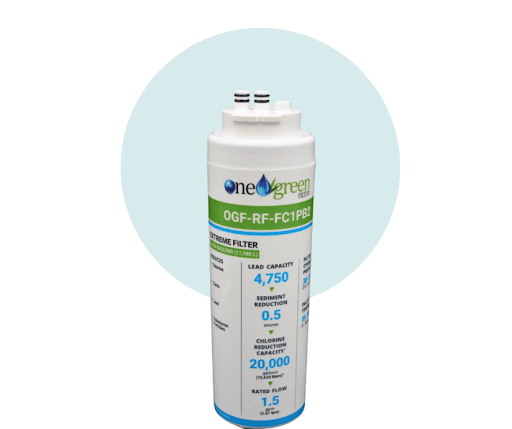Access to clean and safe drinking water is non-negotiable whether in schools, parks, offices, or homes. That’s where a water fountain filter system comes in. These systems are engineered to transform ordinary tap water into fresh, great-tasting, and contaminant-free hydration at the point of use. Whether you’re upgrading an old drinking fountain or installing a new one, this guide will walk you through everything you need to know about selecting the best water fountain filtration system, with a special focus on trusted brands like One Green Filter.
What Is a Water Fountain Filter System?
A water fountain filter system is a specialized filtration unit designed to be installed in-line with a drinking fountain or bottle filling station. Its purpose is to remove impurities, odors, and harmful contaminants from municipal water supplies before they reach the spout.
These systems commonly feature sediment filters, carbon filters, and microbial barriers, ensuring that the water is not only safe but also tastes refreshing and clean.
Why You Need a Water Fountain Filtration System
1. Eliminate Harmful Contaminants
Tap water can carry chlorine, lead, heavy metals, bacteria, pesticides, and more. A proper filter ensures these are removed, protecting the health of everyone who drinks from the fountain.
2. Improve Taste and Smell
Unfiltered water often carries a chlorine taste or musty odor. A high-quality filtration system enhances flavor, making water more enjoyable and encouraging hydration.
3. Compliance and Safety
Many institutions, such as schools and commercial buildings, are now required by law to maintain filtered water systems, especially in older plumbing infrastructures where lead exposure is a concern.
4. Protect Your Equipment
By removing sediment and scale, filters help prolong the lifespan of your fountain, reducing maintenance costs and downtime.
Key Features to Look For in a Water Fountain Filter System
1. Multi-Stage Filtration
A reliable system should include:
- Sediment pre-filter to catch large particles
- Activated carbon for chlorine, odor, and taste
- Lead or heavy metal reduction filters
- Optional microbial or UV filtration for schools or healthcare settings
2. Flow Rate and Capacity
Choose a filter that provides a sufficient flow rate (usually 1.0–2.0 GPM) and has a high gallon capacity (e.g., 3,000–6,000 gallons) to handle foot traffic without frequent replacements.
3. NSF Certification
Always ensure the system or filter cartridges are NSF/ANSI certified, particularly for Standard 42 (taste/odor) and Standard 53 (health effects).
4. Easy Replacement
Opt for systems that allow tool-free filter changes and feature visible indicators for replacement needs.
Common Places That Require Water Fountain Filter Systems
- Schools and Universities
- Public Parks and Outdoor Recreational Areas
- Gyms and Fitness Centers
- Hospitals and Clinics
- Corporate Offices and Industrial Buildings
- Residential Complexes and Apartment Lobbies
One Green Filter – The Trusted Name in Fountain Filtration
When it comes to dependable filtration, One Green Filter has become a leading choice for both commercial and residential applications. Their advanced water fountain filter systems are designed to meet the highest standards in safety, performance, and ease of use.
Why Choose One Green Filter?
- NSF-certified multi-stage filters that eliminate lead, chlorine, VOCs, and bacteria
- Durable cartridges with long service life (up to 6,000 gallons)
- Fast flow rate ideal for busy fountains and bottle fill stations
- Quick-change filters for easy, no-fuss maintenance
- Compact designs that fit under or behind standard water fountains
Whether you’re managing a school hydration initiative or simply upgrading your office fountain, One Green Filter delivers clean, safe, and delicious drinking water with every sip.
Installation and Maintenance Tips
Installation
- Compatible with most existing water fountains and bottle fillers
- Easily connects to water lines with standard plumbing fittings
- Professional installation recommended for high-traffic or large systems
Maintenance
- Replace filters every 6–12 months, depending on usage
- Flush new filters for a few minutes before use
- Regularly inspect fittings for leaks or wear
Frequently Asked Questions
Can I install a fountain filter myself?
Yes, many systems (especially from One Green Filter) come with DIY installation kits and straightforward instructions. However, for institutional installations, a licensed plumber is often recommended.
How do I know when the filter needs replacing?
Most filters offer change indicators, but it’s good practice to replace every 6 months or after the rated gallon capacity has been reached.
Is it necessary if I already use city water?
Absolutely. Even treated city water may contain residual chlorine, pipe corrosion, or biofilm, all of which can negatively affect taste and safety.
Conclusion: A Must-Have for Modern Hydration
Installing a water fountain filter system is no longer just a preference—it’s a necessity. Whether you’re responsible for the health of students, employees, or your own family, having on-demand, purified drinking water from a fountain enhances safety, taste, and convenience.
One Green Filter provides the industry-leading solutions you need—backed by advanced filtration technology, long-lasting components, and effortless maintenance.



